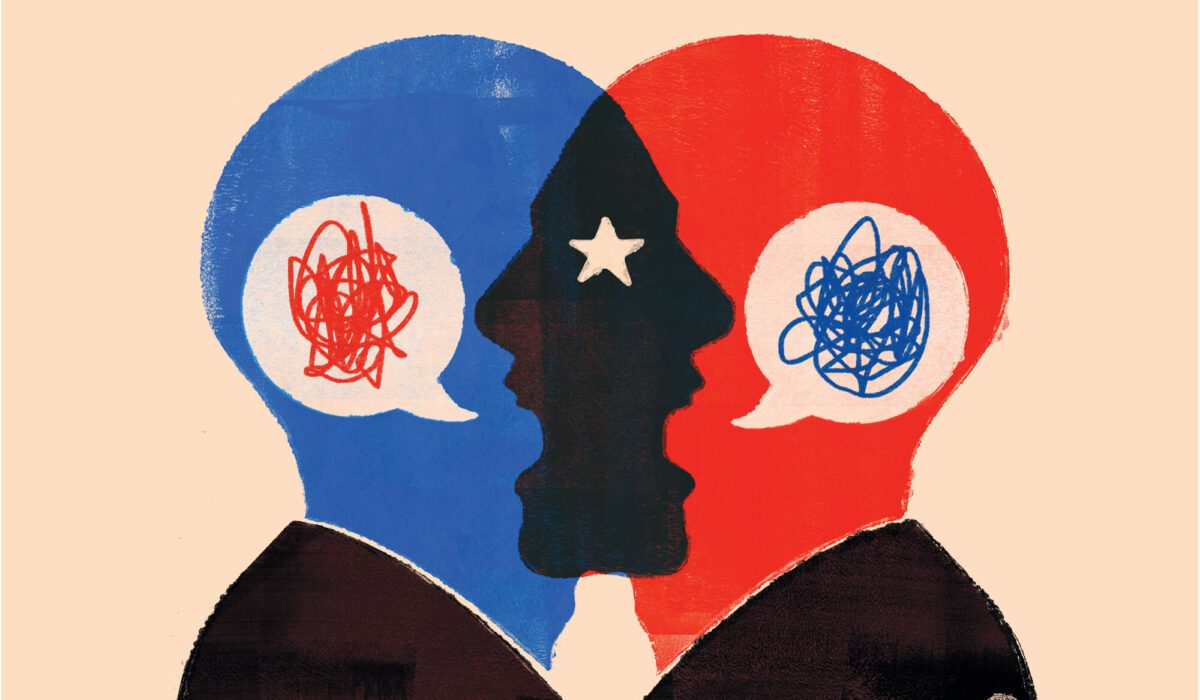Strong Division
On the growing distrust between political parties

During World War II, Americans—Republicans and Democrats alike—were willing to sacrifice on behalf of the country’s interests against a common enemy. They ate less meat, planted victory gardens, and rationed gasoline. Fast-forward 80 years to a political climate rife with partisan animosity.
“Intuitively it makes sense that common enemies unite people,” says Assistant Professor Douglas Guilbeault. “Given the state of polarization today, the question is whether we can get Republicans and Democrats working together in the face of a common threat.”
In new research published in Nature Scientific Reports, Guilbeault and six co-authors found the opposite to be true. Their series of experiments found that exposing partisans to information about a common enemy instilled in Republicans a deeper distrust of Democrats than they started out with. The same was not true of Democrats in the study.
The researchers recruited about 1,700 Republicans and Democrats between October 2019 and January 2020 and had them read one of three articles from Reuters: one with a patriotic bent about Fourth of July celebrations nationwide; another evoking a “common enemy” about how Russia, Iran, and China were conspiring against the U.S.; and a third neutral piece on early human drawings discovered in South Africa.
Next, participants were offered financial incentives to answer the question: “What percentage of immigrants between 2011 and 2015 were college educated?” After responding, participants were given an answer supposedly generated by a member of the opposing political party. (In fact, it was generated by a bot programmed to give a “guess” that differed from the participant’s by roughly 50 percentage points.) Participants were then given the chance to revise their guesses and told that their compensation would increase according to the accuracy of their response.
“The extent to which someone used information from the other party to update their estimate gave us insight into cross-party cooperation,” Guilbeault says.
What they found was that reading the “common-enemy” article appeared to increase animosity rather than bringing people closer. Specifically, Republicans who had read the article were less willing to use information provided by Democrats. The effect was stronger among those who described themselves as more conservative.
The different parties’ views of what it means to be “American” may be what drove the different reactions, the researchers theorize. A recent Pew Research Center survey found that Republicans were significantly more likely than Democrats to view the other party as un-American and a threat to the nation’s well-being (36% of Republicans versus 27% of Democrats).
One example of this was the finger-pointing each party did with COVID-19. “Intensely polarized societies seem to create this backfire effect,” Guilbeault says. “Rather than bringing groups together, exposure to a common enemy makes them more likely to accuse each other of being on the enemy’s side.”
